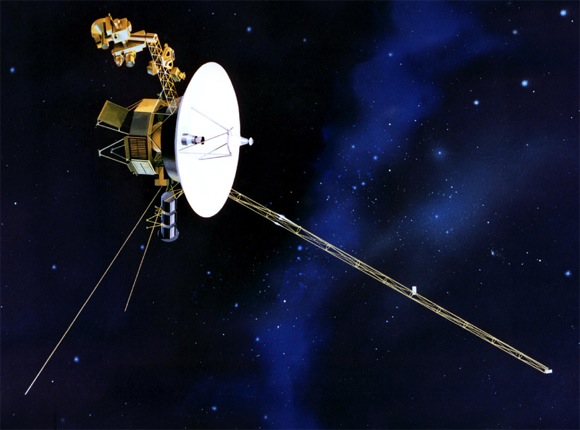The American Geophysical Union (AGU) earlier today (March 20, 2013) issued a press release whose title was Voyager 1 has left the solar system, sudden changes in cosmic rays indicate. But, according to the Voyager science team, it isn’t so. Edward Stone, Voyager project scientist based at the California Institute of Technology in Pasadena, California, wrote in a status update on Voyager 1’s location, issued later today:
The Voyager team is aware of reports today that NASA’s Voyager 1 has left the solar system. It is the consensus of the Voyager science team that Voyager 1 has not yet left the solar system or reached interstellar space.
The American Geophysical Union has apparently acknowledged the misunderstanding, and has changed its press release title.
Voyager has been traveling outward away from the sun since the late 1970s. All this time, it has been moving through what scientists call the heliosphere, or sphere of the sun’s influence, a region of space dominated by the sun and its wind of energetic particles. You can think of the heliosphere as a bubble-like space around our sun. Scientists have been watching and waiting for some time for Voyager 1 to penetrate the outer surface of this bubble and enter the surrounding interstellar medium of gas and dust that pervades the Milky Way galaxy.

On August 25, 2012, Voyager 1 spacecraft measured dramatic changes in radiation levels, more than 11 billion miles from the sun. Anomalous cosmic rays, which are cosmic rays trapped in the outer heliosphere, all but vanished, dropping to less than 1 percent of previous amounts. At the same time, galactic cosmic rays – cosmic radiation from outside of the solar system – spiked to levels not seen since Voyager’s launch, with intensities as much as twice previous levels.
Bill Webber, professor emeritus of astronomy at New Mexico State University in Las Cruces, calls this transition boundary the heliocliff. He wrote that:
Within just a few days, the heliospheric intensity of trapped radiation decreased, and the cosmic ray intensity went up as you would expect if it exited the heliosphere.
His work was accepted for publication in Geophysical Research Letters, a journal of the American Geophysical Union, prompting the AGU press release of March 20. However, Voyager scientists apparently disagreed with Webber’s interpretation. They wrote:
In December 2012, we [the Voyager science team] reported that Voyager 1 is within a new region called ‘the magnetic highway’ where energetic particles changed dramatically. A change in the direction of the magnetic field is the last critical indicator of reaching interstellar space, and that change of direction has not yet been observed.
Journey on, Voyager 1.
Bottom line: Early in the day on March 20, 2013, the American Geophysical Union announced that Voyager 1 had left the solar system. However, NASA’s Voyager science team disagrees, saying it has not yet penetrated the outer surface of the heliosphere, or sphere of our sun’s influence. Eventually, though – perhaps soon – it will!











